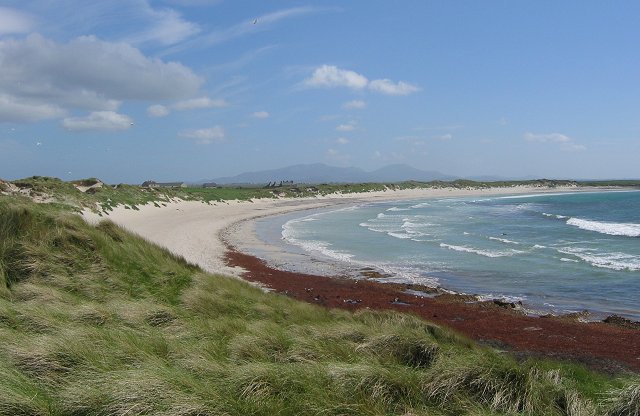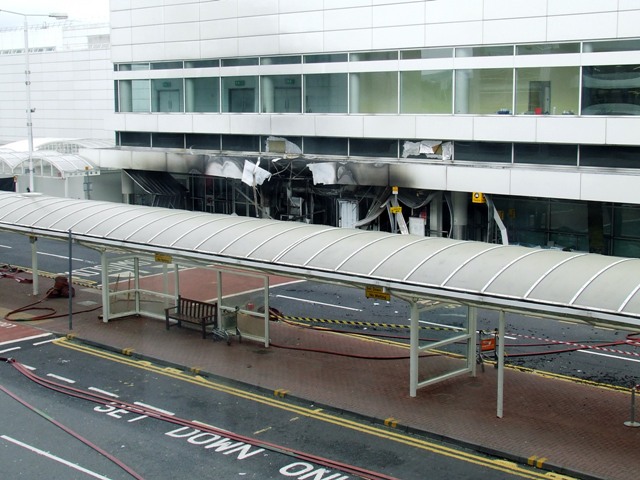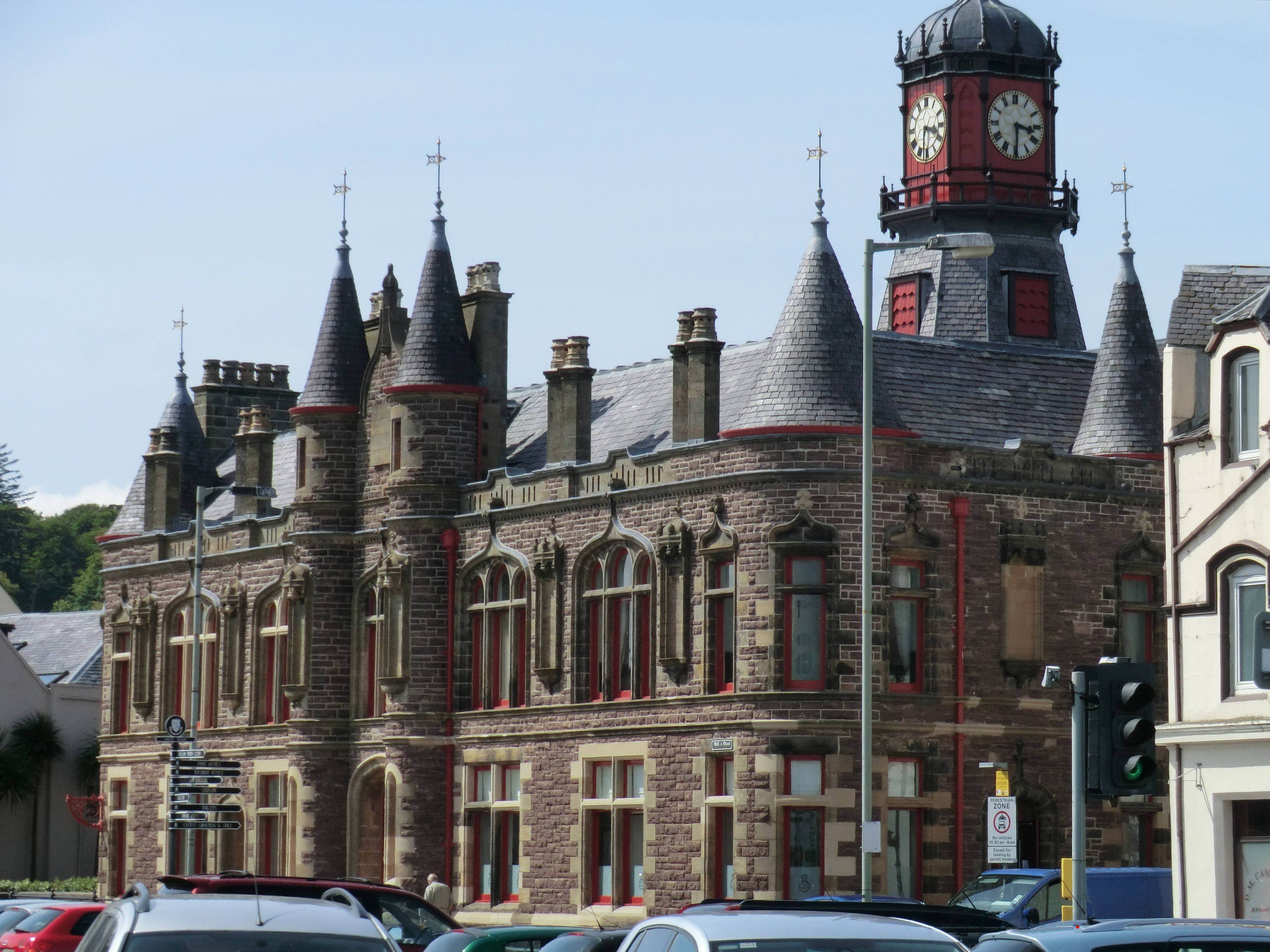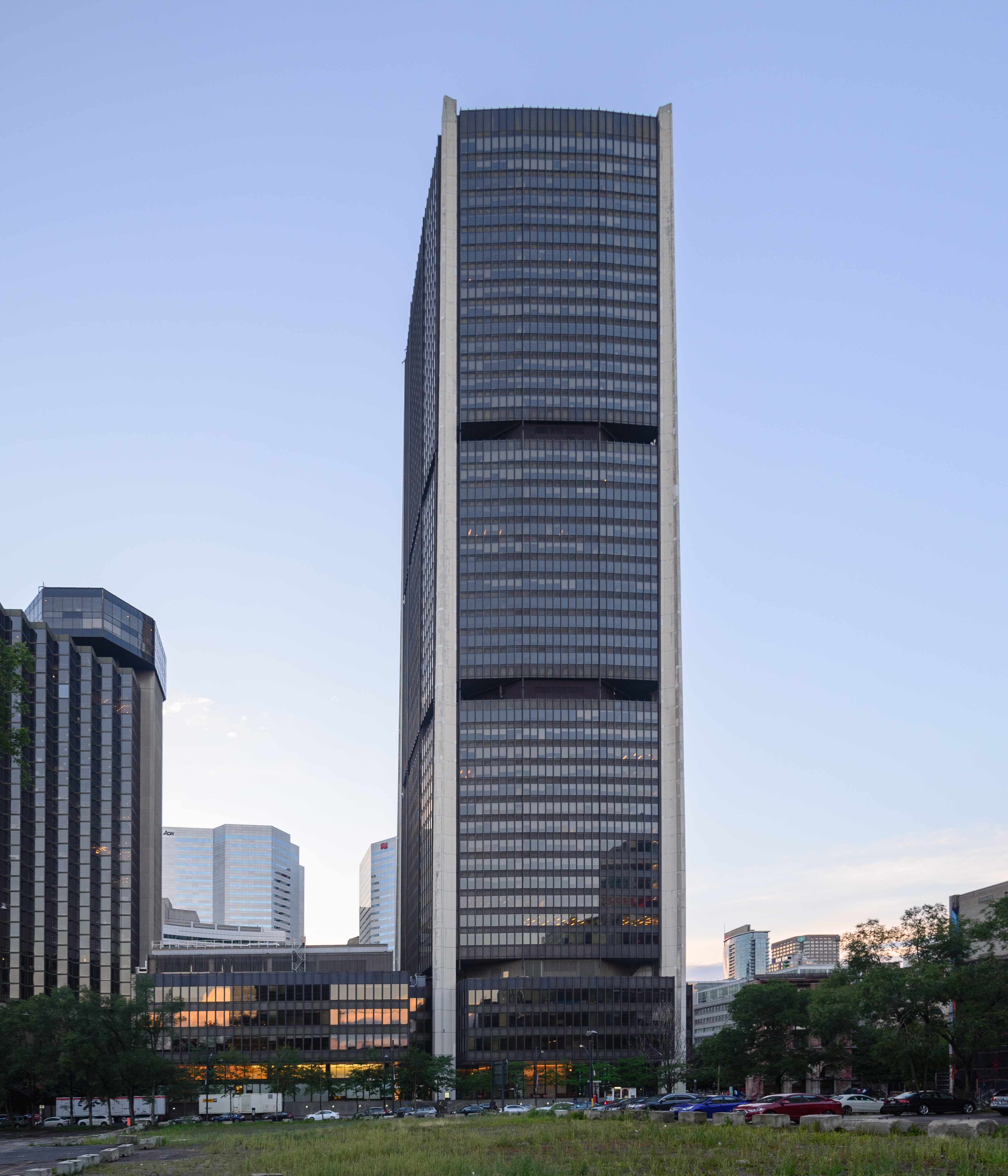|
Balivanich
Balivanich ( gd, Baile a' Mhanaich) is a village on the island of Benbecula in the Outer Hebrides off the west coast of Scotland. It is the main centre for Benbecula and the adjacent islands of North Uist, South Uist and several smaller islands. Balivanich is within the parish of South Uist. History The name meaning "town of the monk" possibly relates to a monastery which may have been founded here as early as during the 6th century. ''Teampull Chaluim Chille'', an ancient church dedicated to Columba, might have been part of this monastery; its remains can still be seen south of the village. An airfield to the north, built during World War II, became the control centre for the Hebrides rocket range, established in 1957 at the height of the Cold War. It is now Benbecula Airport. Geography Balivanich is located on the north-west coast of Benbecula in a largely flat area ( above sea level). As of the date of the census on 29 April 2001, the village comprised . Climate A weather st ... [...More Info...] [...Related Items...] OR: [Wikipedia] [Google] [Baidu] |
Benbecula
Benbecula (; gd, Beinn nam Fadhla or ) is an island of the Outer Hebrides in the Atlantic Ocean off the west coast of Scotland. In the 2011 census, it had a resident population of 1,283 with a sizable percentage of Roman Catholics. It is in a zone administered by or the Western Isles Council. The island is about from west to east and a similar distance from north to south. It lies between the islands of North Uist and South Uist and is connected to both by road causeways. Benbecula's main settlement and administrative centre is Balivanich (Scottish Gaelic: ''Baile a' Mhanaich'', meaning "Town of the Monk"). In 1746, Bonnie Prince Charlie was caught in a storm and forced to land on Benbecula. The population of Benbecula were sympathetic to the Jacobite cause, and smuggled him off the island to safety, as the song has it: "over the sea to Skye". In 2006, local residents took control of parts of the island in a community buy-out. The previous landowners, a sporting syndica ... [...More Info...] [...Related Items...] OR: [Wikipedia] [Google] [Baidu] |
Benbecula Airport Building
Benbecula (; gd, Beinn nam Fadhla or ) is an island of the Outer Hebrides in the Atlantic Ocean off the west coast of Scotland. In the 2011 census, it had a resident population of 1,283 with a sizable percentage of Roman Catholics. It is in a zone administered by or the Western Isles Council. The island is about from west to east and a similar distance from north to south. It lies between the islands of North Uist and South Uist and is connected to both by road causeways. Benbecula's main settlement and administrative centre is Balivanich (Scottish Gaelic: ''Baile a' Mhanaich'', meaning "Town of the Monk"). In 1746, Bonnie Prince Charlie was caught in a storm and forced to land on Benbecula. The population of Benbecula were sympathetic to the Jacobite cause, and smuggled him off the island to safety, as the song has it: "over the sea to Skye". In 2006, local residents took control of parts of the island in a community buy-out. The previous landowners, a sporting syndicate ... [...More Info...] [...Related Items...] OR: [Wikipedia] [Google] [Baidu] |
Benbecula Airport
Benbecula Airport ( gd, Port-adhair Bheinn na Faoghla) is located on the island of Benbecula in the Outer Hebrides, off the West Coast of Scotland. It is a small rural airport owned and maintained by Highlands and Islands Airports Limited. History Early years An airfield has existed on Benbecula since 1936 when Scottish Airways began operating to what was known as Balivanich Airfield, located on the north west corner of the island. Second World War Between 1941 and 1942, during the Second World War, the airfield became RAF Benbecula, when it came under the control of the Royal Air Force's No. 15 (T) Group, Coastal Command. During this period it was home to aircraft carrying out patrols in the Atlantic, protecting shipping convoys from German U-Boats. Such missions were carried out by the Lockheed Hudson and latterly the Boeing Fortress and Vickers Wellington. At its peak, RAF Benbecula had several thousand troops stationed at the station and at several other sites ... [...More Info...] [...Related Items...] OR: [Wikipedia] [Google] [Baidu] |
Outer Hebrides
The Outer Hebrides () or Western Isles ( gd, Na h-Eileanan Siar or or ("islands of the strangers"); sco, Waster Isles), sometimes known as the Long Isle/Long Island ( gd, An t-Eilean Fada, links=no), is an island chain off the west coast of mainland Scotland. The islands are geographically coextensive with , one of the 32 unitary council areas of Scotland. They form part of the archipelago of the Hebrides, separated from the Scottish mainland and from the Inner Hebrides by the waters of the Minch, the Little Minch, and the Sea of the Hebrides. Scottish Gaelic is the predominant spoken language, although in a few areas English speakers form a majority. Most of the islands have a bedrock formed from ancient metamorphic rocks, and the climate is mild and oceanic. The 15 inhabited islands have a total population of and there are more than 50 substantial uninhabited islands. The distance from Barra Head to the Butt of Lewis is roughly . There are various important preh ... [...More Info...] [...Related Items...] OR: [Wikipedia] [Google] [Baidu] |
Scottish Gaelic
Scottish Gaelic ( gd, Gàidhlig ), also known as Scots Gaelic and Gaelic, is a Goidelic language (in the Celtic branch of the Indo-European language family) native to the Gaels of Scotland. As a Goidelic language, Scottish Gaelic, as well as both Irish and Manx, developed out of Old Irish. It became a distinct spoken language sometime in the 13th century in the Middle Irish period, although a common literary language was shared by the Gaels of both Ireland and Scotland until well into the 17th century. Most of modern Scotland was once Gaelic-speaking, as evidenced especially by Gaelic-language place names. In the 2011 census of Scotland, 57,375 people (1.1% of the Scottish population aged over 3 years old) reported being able to speak Gaelic, 1,275 fewer than in 2001. The highest percentages of Gaelic speakers were in the Outer Hebrides. Nevertheless, there is a language revival, and the number of speakers of the language under age 20 did not decrease between the 200 ... [...More Info...] [...Related Items...] OR: [Wikipedia] [Google] [Baidu] |
Berneray, North Uist
Berneray ( gd, Beàrnaraigh na Hearadh) is an island and community in the Sound of Harris, Scotland. It is one of fifteen inhabited islands in the Outer Hebrides. It is famed for its rich and colourful history which has attracted much tourism. It lies within the South Lewis, Harris and North Uist National Scenic Area, one of 40 such areas in Scotland which are defined so as to identify areas of exceptional scenery and to ensure its protection from inappropriate development. With an area of 10.1 square kilometres (2496 acres), Berneray rises to a height of 305 feet (93 m) at Beinn Shlèibhe (Moor Hill) and 278 feet (85 m) at Borve Hill. It is known for its sandy beaches backed with sand dunes. The west beach, a three-mile stretch of wide, clean and often deserted sand, is widely acclaimed. There is strong evidence that points to Berneray being inhabited since the Bronze Age, and possibly before. The island is scattered with ancient sacred sites, stone circles, signs of Viking in ... [...More Info...] [...Related Items...] OR: [Wikipedia] [Google] [Baidu] |
Royal Air Force
The Royal Air Force (RAF) is the United Kingdom's air and space force. It was formed towards the end of the First World War on 1 April 1918, becoming the first independent air force in the world, by regrouping the Royal Flying Corps (RFC) and the Royal Naval Air Service (RNAS). Following the Allied victory over the Central Powers in 1918, the RAF emerged as the largest air force in the world at the time. Since its formation, the RAF has taken a significant role in British military history. In particular, it played a large part in the Second World War where it fought its most famous campaign, the Battle of Britain. The RAF's mission is to support the objectives of the British Ministry of Defence (MOD), which are to "provide the capabilities needed to ensure the security and defence of the United Kingdom and overseas territories, including against terrorism; to support the Government's foreign policy objectives particularly in promoting international peace and security". ... [...More Info...] [...Related Items...] OR: [Wikipedia] [Google] [Baidu] |
Glasgow Airport
gd, Port-adhair Eadar-nàiseanta Ghlaschu , image = Glasgow Airport logo.svg , image-width = 200 , image2 = GlasgowAirportFromAir.jpg , image2-width = 250 , IATA = GLA , ICAO = EGPF , type = Public , owner = AGS Airports , hub = *easyJet * Loganair *TUI Airways , operator = Glasgow Airport Ltd. , city-served = Glasgow , elevation-f = 26 , pushpin_map = Scotland Renfrewshire , pushpin_map_caption = Location of airport in Renfrewshire , website = , r1-number = 05/23 , r1-length-m = 2,665 , stat-year = 2019 , stat1-header = Passengers , stat1-data = 8,843,214 , stat2-header = Passenger change 18–19 , stat2-data = 8.4% , stat3-header = Aircraft movements , stat3-data = 86,226 , stat4-header = Movements change 17–18 , stat4-data = 3.2% , footnotes = Sources: UK AIP at NATSStatistics from the UK Civil Aviation AuthorityLocation from Glasgow Airport Glasgow Airport, also known as Glasgow International Airport (), formerly ''Abbotsinch Airport'', i ... [...More Info...] [...Related Items...] OR: [Wikipedia] [Google] [Baidu] |
Stornoway
Stornoway (; gd, Steòrnabhagh; sco, Stornowa) is the main town of the Western Isles and the capital of Lewis and Harris in Scotland. The town's population is around 6,953, making it by far the largest town in the Outer Hebrides, as well as the third largest island town in Scotland after Kirkwall in Orkney and Lerwick in Shetland. The traditional civil parish of Stornoway, which includes various nearby villages, has a combined population of just over 10,000. The Comhairle nan Eilean Siar measures population in a different area: the ''Stornoway settlement'' area, Laxdale, Sandwick and Newmarket; in 2019, the estimated population for this area was 6,953. Stornoway is an important port and the major town and administrative centre of the Outer Hebrides. It is home to ''Comhairle nan Eilean Siar'' (the Western Isles Council) and a variety of educational, sporting and media establishments. Until relatively recently, observance of the Christian Sabbath (Sunday) has been assoc ... [...More Info...] [...Related Items...] OR: [Wikipedia] [Google] [Baidu] |
Highlands And Islands Airports
Highlands and Islands Airports Limited (HIAL) is a company based at Inverness Airport that owns and operates 11 airports in the Scottish Highlands, the Northern Isles and the Western Isles. It is a private limited company wholly owned by the Scottish Government, and is categorised as Executive Non Departmental Public Body (ENDPB) of the Scottish Government. History Highlands and Islands Airports Limited was incorporated on 4 March 1986 by the Civil Aviation Authority. In 1995, ownership transferred from the CAA to the Secretary of State for Scotland, and to the Scottish Ministers upon devolution. The company was criticised for a PFI deal signed to build a new terminal at Inverness Airport, which meant that HIAL had to pay £3.50 to the PFI operator for every passenger flying from the airport. In 2006, the PFI deal was cancelled, costing the Scottish Executive £27.5m. Funding It receives subsidies from public funds under terms of the Civil Aviation Act 1982. For the year e ... [...More Info...] [...Related Items...] OR: [Wikipedia] [Google] [Baidu] |
International Civil Aviation Organization
The International Civil Aviation Organization (ICAO, ) is a specialized agency of the United Nations that coordinates the principles and techniques of international air navigation, and fosters the planning and development of international air transport to ensure safe and orderly growth. ICAO headquarters are located in the '' Quartier International'' of Montreal, Quebec, Canada. The ICAO Council adopts standards and recommended practices concerning air navigation, its infrastructure, flight inspection, prevention of unlawful interference, and facilitation of border-crossing procedures for international civil aviation. ICAO defines the protocols for air accident investigation that are followed by transport safety authorities in countries signatory to the Chicago Convention on International Civil Aviation. The Air Navigation Commission (ANC) is the technical body within ICAO. The commission is composed of 19 commissioners, nominated by the ICAO's contracting states and app ... [...More Info...] [...Related Items...] OR: [Wikipedia] [Google] [Baidu] |
International Air Transport Association
The International Air Transport Association (IATA ) is a trade association of the world's airlines founded in 1945. IATA has been described as a cartel since, in addition to setting technical standards for airlines, IATA also organized tariff conferences that served as a forum for price fixing. Consisting in 2016 of 290 airlines, primarily major carriers, representing 117 countries, the IATA's member airlines account for carrying approximately 82% of total available seat miles air traffic. IATA supports airline activity and helps formulate industry policy and standards. It is headquartered in Canada in the city of Montréal, with executive offices in Geneva, Switzerland. History IATA was formed in April 1945 in Havana, Cuba. It is the successor to the International Air Traffic Association, which was formed in 1919 at The Hague, Netherlands. At its founding, IATA consisted of 57 airlines from 31 countries. Much of IATA's early work was technical and IATA provided input to th ... [...More Info...] [...Related Items...] OR: [Wikipedia] [Google] [Baidu] |






.jpg)

